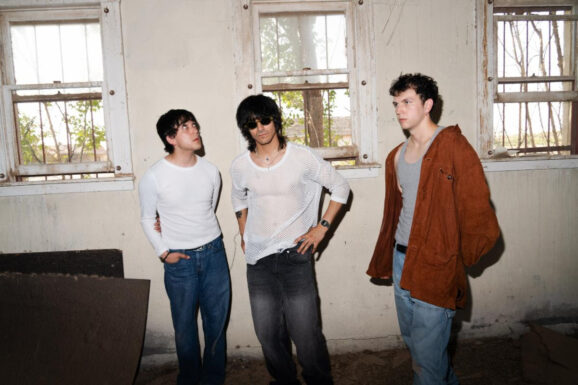[rating=9.00]
It’s never been easy to make it as a touring punk band. The history of punk rock is littered with anecdotes of broken down vans, crowds of five or ten fans, stolen food, stolen gas, or any other number of perilous obstacles that punk bands of old wore as badges of honor. There are stories, like the ones Henry Rollins detailed in his book, Get in the Van, about his days touring with the band Black Flag, that would make the concerns of many modern touring acts cringe in horror and disbelief.
Punk’s nature being what it is, the scene itself is ripe for narrative mining. As any current or former punk will tell you, the punk scene is filled with a wide assortment of wild characters with disparate isms and ethos guiding their actions (or, in some cases, inactions). That we have yet to be inundated by punk rock biopics is almost baffling. So, too, with a lack of movies set within the confines of punk rock. That, in itself, is part of the incredible appeal of Green Room.
From director Jeremy Saulnier (Blue Ruin) comes a movie that doesn’t flinch in the face of the tiny details that converge to make up the punk rock scene. For Green Room, Saulnier mines the depths of punk rock to craft a shockingly taut and deliciously gory tale of cat and mouse that hits with the impact of errant elbows thrown in the midst of a raucous pit. It’s punk as fuck, scary as hell, and a wild time at the movies.
Green Room follows the disastrous tour of fictional band The Ain’t Rights as they try to earn enough money to make it back home. Like punk bands in real life, they steal gas, sleep where a fan will let them, and take any gig that offers to pay. That’s how they find themselves playing at a secluded Oregon venue that also happens to double as a meeting ground for local neo-Nazis. After their set—which includes a delightful cover the Dead Kennedys classic “Nazi Punks Fuck Off”—the band becomes accidental witnesses to a brutal murder, leading to a tense standoff with the club’s management as well as its owner Darcy (Patrick Stewart).
The film plays out as a sort of punk rock Assault on Precinct 13, as The Ain’t Rights are beset upon by shitkicking skin heads looking to protect their movement and their boss. It’s a simple set up that plays out simply, eschewing the need for excesses of plot and character that might otherwise hinder the spirit of the movie. Normally this might be an issue; here, it plays into the loving homage of punk rock and the punk rock scene.
As with the music of punk, Green Room revels in simplicity in order to create something larger than its three power chords might seemingly allow for. The film is a sort of a “fuck you” to the established guidelines of cinematic protocol, as it is with punk music. Punk rock, as a genre, built itself up with a DIY attitude and a refusal to kowtow to convention; its simplicity belies its depth, allowing for covert subterfuge of what music is capable of achieving.
Saulnier guides the film along similar lines. On the surface, substance feels thin and no doubt many will be turned off by the film’s wanton violence as viewers are pounded by grotesque images and extreme gore. Others will scoff at the utter banality of the familiar plotline, which never pretends to be anything but exceedingly simple. When combined, however, Green Room becomes a remarkably complex rumination on survival masquerading as a celebration of blood and guts.
Punk is a genre that moves from A to B without the pointless, padding noodling of solos and extended jams. It’s a visceral, raw, and unrestrained expression of emotion that never wastes time with the trappings of excess. As such, Green Room is a film that lacks in pointless meandering and needless twists. It moves from A to B with breathless abandon. And like any good punk will tell you about the circle pit, Green Room leaves in its wake a trail of blood and carnage nearly unmatched in modern cinema, harkening back to the glory days of 70’s exploitation without wading too deeply into the tired waters of modern torture porn.
And that’s the ultimate beauty of the film. Just like punk rock restrains itself as a musical genre, Green Room restrains itself in its depiction of violence. Sure, the images are shocking and gruesome and in your face—definitely and in no way is this a film for the squeamish—but none of it feels like unnecessary. It isn’t violent for the sake of being violent, it’s violence for the sake of narrative. In the same way that punk rock is in your face to make a larger point, Green Room uses its violence to paint a larger picture. It’s one of shocking horror and edge of your seat intensity, but that it accomplishes this without the benefit of needless twists is a remarkable achievement.
Green Room is now playing in theaters everywhere.











One Response